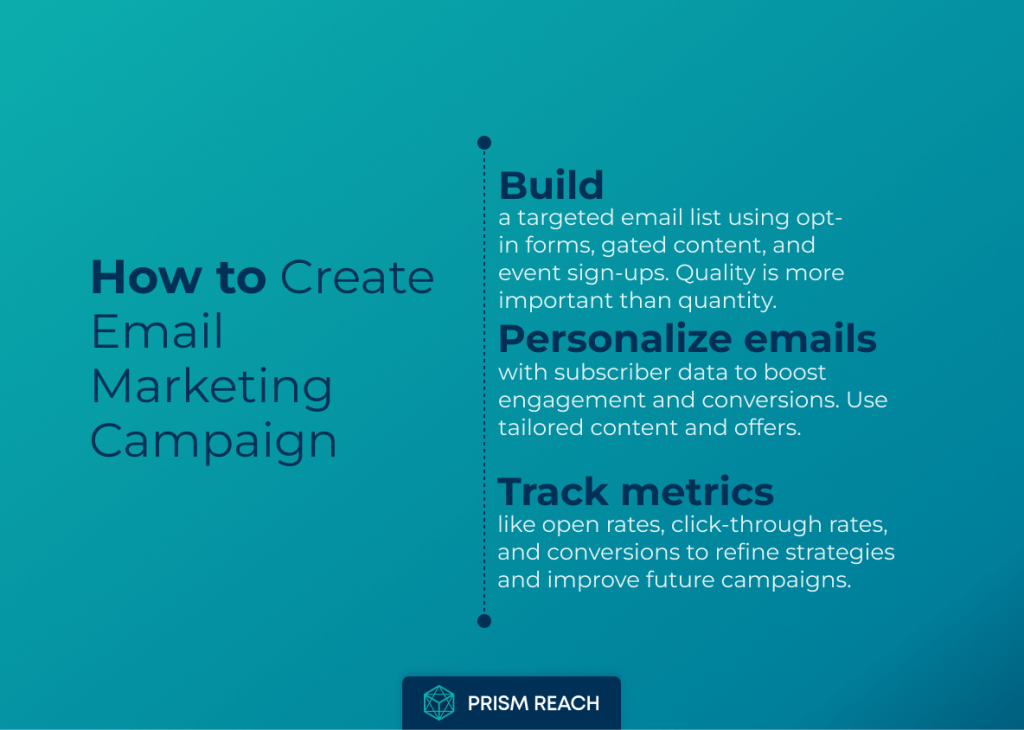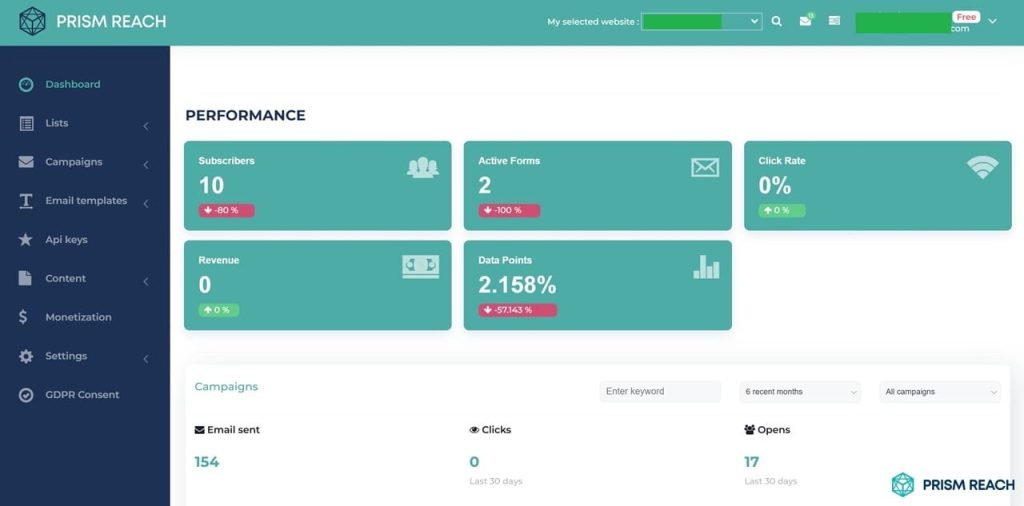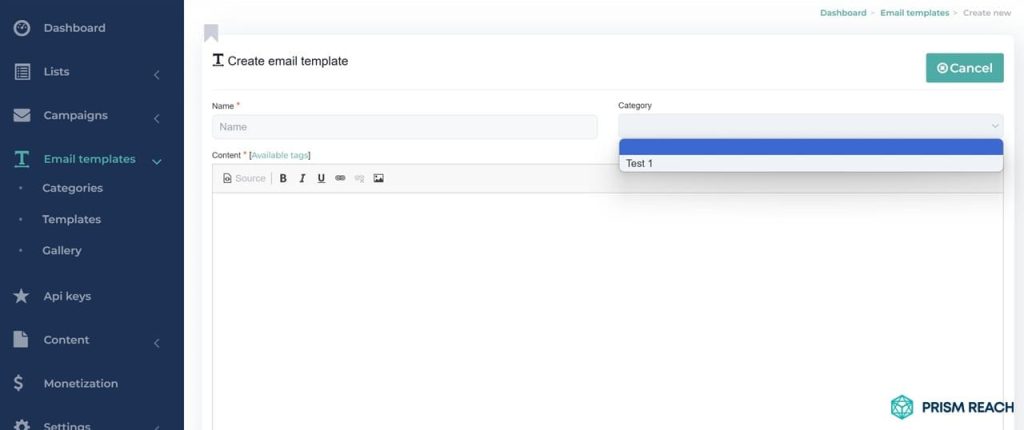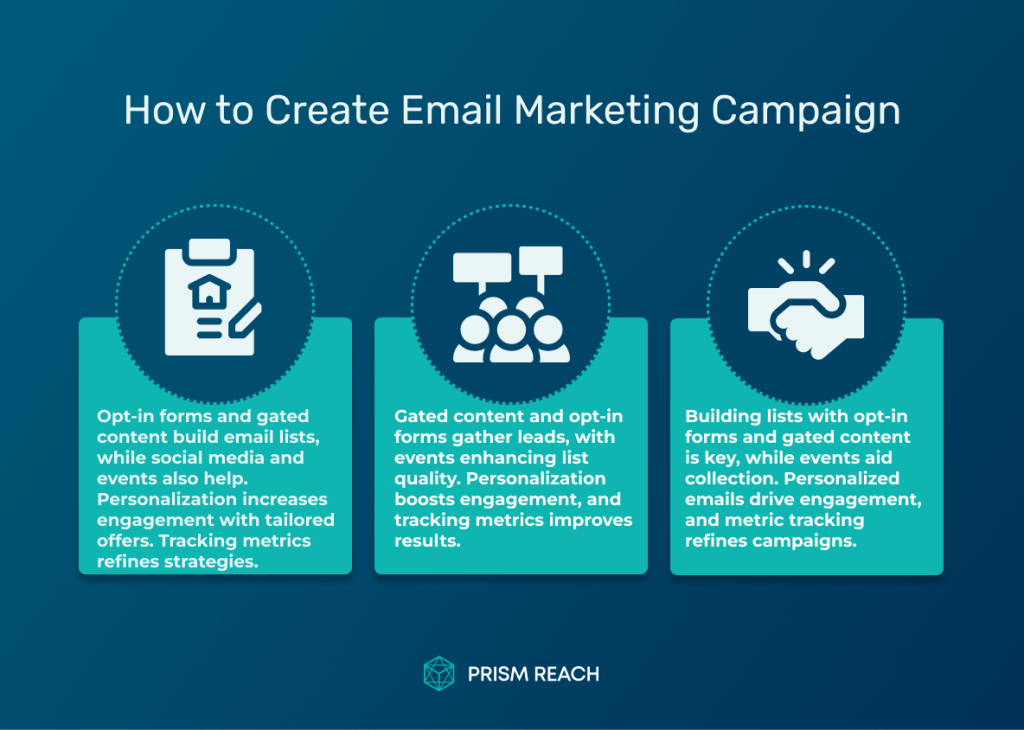Email marketing remains one of the most effective tools for businesses to engage with their audience, build brand loyalty, and drive conversions. However, crafting a successful email marketing campaign requires more than just sending out newsletters. It demands a strategic approach, attention to detail, and a deep understanding of your target audience. In this comprehensive guide, we will walk you through the essential steps to create an email marketing campaign that not only engages your subscribers but also achieves your business goals. Additionally, we’ll explore some lesser-known strategies—our “hidden gems”—that can significantly enhance the effectiveness of your campaigns.
Key Facts
- Email marketing yields an average ROI of $42 for every $1 spent.
- Segmented campaigns can increase revenue by up to 760%.
- Personalized subject lines can boost open rates by 50%.
Upgrade Your Email Marketing with AI Personalization!

Brian Clark
On average, 8 out of 10 people will read your headline copy, but only 2 out of 10 will read the rest.
Crafting an Irresistible Email Marketing Campaign: A Step-by-Step Guide
Step 1: Define Your Goal
The foundation of any successful email marketing campaign lies in clearly defining your objectives. Whether you aim to promote a product, nurture leads, or increase brand awareness, having a specific goal in mind will guide your content creation, timing, and audience targeting. Take the time to align your campaign goals with your overall business objectives to ensure a cohesive and effective strategy.
Step 2: Build a Targeted Email List
To reach the right people with your email campaign, building a targeted email list is crucial. Utilize opt-in forms on your website, offer gated content, and leverage event sign-ups to collect email addresses from interested and qualified leads. Remember, the quality of your email list is more important than its size. Focus on attracting subscribers who genuinely value your content and are more likely to engage with your brand.
- Add opt-in forms to your website, such as in the header, footer, or as pop-ups.
- Offer gated content, like ebooks or whitepapers, in exchange for email addresses.
- Promote email sign-ups at events or through social media.
- Leverage lead magnets, such as exclusive discounts or free trials.
- Encourage current subscribers to refer friends or colleagues.
Remember to provide value and clearly communicate what subscribers can expect from your emails to encourage sign-ups.
Step 3: Choose the Right Email Marketing Tool
Selecting the appropriate email marketing tool is essential for streamlining your campaign creation and management process. Look for a platform that offers features such as automation, segmentation, A/B testing, and analytics. These tools will empower you to create targeted campaigns, optimize your content, and measure your success. Consider your specific needs and budget when choosing an email marketing tool that aligns with your goals.
Prism Reach stands out as an innovative AI-powered SaaS solution designed to enhance the effectiveness of email marketing campaigns through deep personalization and seamless integration.

Step 4: Segment Your Audience
One size does not fit all when it comes to email marketing. Segmenting your audience based on demographics, behavior, and preferences allows you to deliver more personalized and relevant content. By tailoring your messages to specific segments, you can increase engagement, build stronger connections, and drive better results. Utilize the data you collect from your subscribers to create meaningful segments and craft targeted campaigns.
Step 5: Craft Compelling Subject Lines
Your subject line is the gateway to your email’s success. It’s the first impression that determines whether your subscribers will open your email or send it straight to the trash. Invest time in creating compelling subject lines that pique curiosity, evoke emotion, and clearly communicate the value of your email. Use A/B testing to experiment with different subject lines and optimize for higher open rates.
- Pique curiosity with intriguing questions or statements.
- Invoke urgency with time-sensitive offers.
- Personalize with the recipient’s name or interests.
- Keep it concise and clear.
- Use action-oriented language.
Step 6: Create Clear and Engaging Content
Once your subscribers open your email, it’s crucial to deliver clear, concise, and engaging content. Keep your messaging focused on the key points you want to convey and use a conversational tone to connect with your audience. Incorporate storytelling techniques to create an emotional bond and highlight the benefits of your product or service. Use bullet points, subheadings, and visuals to break up the text and make your content more digestible.
Step 7: Design Visually Appealing Emails
The visual appeal of your emails plays a significant role in capturing your subscribers’ attention and encouraging engagement. Opt for a clean, responsive design that looks great on both desktop and mobile devices. Use a consistent color scheme and font style that aligns with your brand identity. Incorporate high-quality images and visuals that enhance your message without overwhelming the content. Ensure your design is optimized for different email clients and devices to provide a seamless user experience.
Best Practices for Email Design:
- Use a responsive layout for mobile and desktop.
- Maintain a consistent color scheme and branding.
- Incorporate high-quality images and visuals.
- Optimize images for faster loading times.
- Include clear and prominent calls-to-action (CTAs).

Step 8: Personalize Your Emails
Personalization is key to creating a connection with your subscribers and making them feel valued. Use the data you collect to personalize your emails beyond just addressing recipients by name. Tailor your content, offers, and recommendations based on their interests, behavior, and preferences. Personalized emails have been shown to increase open rates, click-through rates, and conversions, so invest in strategies that allow you to deliver a customized experience.
Prism Reach excels in hyper-personalization by leveraging AI to analyze subscriber behavior and preferences, enabling you to deliver highly relevant content to each individual.

Step 9: Optimize Send Times
Timing is everything when it comes to email marketing. Experiment with different send times and days to determine when your audience is most likely to engage with your emails. Consider factors such as time zones, work schedules, and device usage patterns. Use A/B testing and analyze your email metrics to identify the optimal send times for your specific audience. Continuously refine your sending strategy based on the data you collect.
Step 10: Leverage Automation
Email automation is a game-changer for marketers looking to save time and deliver targeted content at scale. Set up automated workflows for welcome emails, onboarding series, abandoned cart reminders, and other triggered campaigns. Automation allows you to send the right message to the right person at the right time, without manual intervention. Use your email marketing tool’s automation features to streamline your processes and deliver a more personalized experience.
Prism Reach offers robust automation capabilities, allowing you to set up complex workflows that respond to subscriber behaviors and interactions in real-time.
Step 11: Test and Optimize Your Campaigns
Continuous testing and optimization are essential for improving the performance of your email campaigns. Regularly conduct A/B tests on various elements such as subject lines, content, design, and calls-to-action to identify what resonates best with your audience. Analyze your email metrics, such as open rates, click-through rates, and conversions, to gain insights into your subscribers’ behavior and preferences. Use these insights to refine your strategy and make data-driven decisions for future campaigns.
Step 12: Measure and Analyze Your Results
Measuring the success of your email marketing campaigns is crucial for understanding their impact and identifying areas for improvement. Track key performance indicators (KPIs) such as open rates, click-through rates, conversion rates, unsubscribe rates, and revenue generated. Use your email marketing tool’s analytics dashboard to monitor these metrics and compare performance across different campaigns. Regularly review your results and use the insights gained to optimize your strategy and set new goals.
Hidden Gems for Enhancing Your Email Marketing Campaigns
1. Utilize Generative AI for Content Creation
Generative AI has revolutionized content creation by enabling marketers to produce personalized and relevant content at scale. Tools like Prism Reach leverage advanced AI algorithms to analyze user data and past interactions, generating tailored email content that resonates with each subscriber. This approach not only saves time but also ensures that each email feels uniquely crafted for its recipient.
For example, if a subscriber frequently engages with content related to outdoor activities, Prism Reach can automatically generate emails featuring new products, blog posts, or promotions in that niche. This level of personalization enhances the overall user experience, making subscribers feel understood and valued.
- Time Efficiency: Automates the content creation process, allowing marketers to focus on strategy and analysis.
- Scalability: Easily manage and personalize thousands of emails without additional resources.
- Consistency: Maintains a consistent voice and style across all communications.
2. Incorporate Interactive Email Elements
Interactive elements within emails can significantly boost engagement rates by making the content more engaging and dynamic. Features such as polls, surveys, and quizzes encourage recipients to interact directly with the email, providing valuable feedback and insights into their preferences.
For instance, including a short survey about product preferences can help you gather data to further personalize future emails. Similarly, quizzes related to your industry can entertain your audience while subtly promoting your offerings.
- Polls: Quick questions that gauge subscriber opinions on specific topics.
- Surveys: More in-depth questionnaires that provide detailed insights into subscriber preferences.
- Quizzes: Fun and engaging activities that can educate subscribers about your products or services.
Prism Reach seamlessly integrates these interactive elements, allowing you to embed them directly into your emails without the need for complex coding.
3. Implement Real-Time Content Updates
Real-time content updates ensure that the information within your emails remains relevant and timely. By leveraging dynamic content blocks, you can adjust the content based on user actions or external factors such as inventory levels, current weather conditions, or live event updates.
For example, an eCommerce retailer can display real-time stock availability, ensuring subscribers are informed about the latest product statuses. Similarly, a news publisher can update headlines based on the latest happenings, keeping their audience informed with the most current information.
- Dynamic Pricing: Automatically adjust prices based on demand or inventory levels.
- Live Content: Update news headlines or blog posts as new information becomes available.
- Personalized Recommendations: Show products or content tailored to the subscriber’s recent activities.
Prism Reach excels in enabling real-time content updates by utilizing its AI-driven platform to monitor and adjust email content dynamically, ensuring your messages are always up-to-date and relevant.
4. Introduce Gamification Techniques
Gamification involves incorporating game-like elements into your email campaigns to make them more engaging and enjoyable for subscribers. Techniques such as scratch cards, spin-to-win features, and progress bars can motivate recipients to interact with your emails and take desired actions.
For instance, a retail brand might include a scratch card offering a discount on the next purchase, encouraging subscribers to engage with the email and visit the website. Similarly, a progress bar can show how close a subscriber is to earning a reward, fostering a sense of accomplishment and encouraging continued interaction.
- Scratch Cards: Offer instant rewards or discounts to encourage immediate engagement.
- Spin-to-Win: Allow subscribers to “spin” for a chance to win prizes, adding an element of excitement.
- Progress Bars: Show advancement towards a goal, motivating subscribers to complete desired actions.
Prism Reach facilitates the integration of these gamification elements, making it easy to embed interactive features that enhance the user experience and drive higher engagement rates.
5. Hyper-Personalization Beyond Names
While addressing subscribers by their names is a good start, hyper-personalization takes it to the next level by tailoring messages, promotions, and product recommendations based on detailed audience segments and individual behaviors. This approach ensures that each email is highly relevant to the recipient, increasing the likelihood of engagement and conversion.
For example, if a subscriber has shown interest in a particular category of products, Prism Reach can automatically include personalized product recommendations in their emails. Additionally, based on browsing history and past purchases, the platform can suggest complementary products or exclusive offers that align with the subscriber’s interests.
- Behavioral Segmentation: Group subscribers based on their interactions, such as website visits, clicks, and purchases.
- Predictive Analytics: Use AI to forecast subscriber interests and tailor content accordingly.
- Customized Recommendations: Provide product or content suggestions that align with individual subscriber preferences.
Prism Reach empowers marketers to achieve this level of personalization by creating detailed user avatars and leveraging AI to predict and respond to subscriber interests and behaviors effectively.
Benefits of Using Prism Reach for Your Email Marketing Campaigns
- AI-Powered Personalization: Enhances content relevance for each subscriber, leading to higher engagement and conversion rates.
- Seamless Integration: Quick setup and easy migration of existing email lists, allowing you to get started without hassle.
- Advanced Analytics: Provides deep insights into campaign performance, enabling data-driven decisions to optimize future campaigns.
1. AI-Powered Personalization
At the heart of Prism Reach is its AI-powered personalization engine, which analyzes vast amounts of user data to deliver highly tailored email content. By understanding each subscriber’s preferences, behaviors, and interactions, Prism Reach ensures that every email is relevant and engaging.
This level of personalization goes beyond basic name personalization, allowing for dynamic content that adapts to each subscriber’s unique profile. Whether it’s recommending products, customizing offers, or tailoring content topics, Prism Reach’s AI ensures that your emails speak directly to each individual, fostering a deeper connection and increasing the likelihood of conversions.
- Dynamic Content Blocks: Automatically adjust sections of your email based on subscriber data.
- Personalized Recommendations: Suggest products or content that align with each subscriber’s interests.
- Behavioral Insights: Use past interactions to inform future email content and strategies.
With Prism Reach, AI-driven personalization transforms your email campaigns into highly effective communication tools that resonate with your audience.
2. Seamless Integration
Integrating a new email marketing tool into your existing workflow can often be a daunting task. However, Prism Reach is designed with seamless integration in mind, ensuring a smooth transition with minimal disruption to your current processes.
The platform offers a quick setup process, allowing you to get up and running within minutes. Its user-friendly interface makes it accessible to marketers of all skill levels, eliminating the need for extensive training or technical expertise.
- Quick Setup: Get your campaigns running in no time with an intuitive setup process.
- One-Click Uploads: Easily migrate your existing subscriber lists without data loss or complications.
- Compatibility: Works seamlessly with popular CRM and marketing tools, ensuring smooth data flow and synchronization.
Whether you’re a small business or a large enterprise, Prism Reach’s seamless integration capabilities make it a versatile choice for enhancing your email marketing efforts without the usual headaches of adopting new software.
3. Advanced Analytics
Understanding the performance of your email campaigns is crucial for continuous improvement and success. Prism Reach offers advanced analytics that provide deep insights into various aspects of your campaigns, enabling you to make informed, data-driven decisions.
The platform’s analytics dashboard offers a comprehensive view of key performance indicators (KPIs) such as open rates, click-through rates, conversion rates, and more. By analyzing these metrics, you can identify what’s working and what needs adjustment, allowing you to optimize your strategies for better results.
- Real-Time Reporting: Monitor campaign performance as it happens, allowing for timely adjustments.
- Detailed Metrics: Gain insights into subscriber behaviors, engagement patterns, and conversion trends.
- Customizable Dashboards: Tailor your analytics view to focus on the metrics that matter most to your business objectives.
With Prism Reach’s advanced analytics, you can delve deeper into your campaign performance, uncover hidden opportunities, and refine your email marketing strategies to achieve maximum impact.

Frequently Asked Questions
Conclusion
Creating a successful email marketing campaign requires a strategic, data-driven approach that prioritizes audience engagement and continuous optimization. By defining clear goals, segmenting your audience, crafting compelling content, and leveraging automation tools, you can develop campaigns that resonate with your subscribers and drive meaningful results. Remember to regularly analyze your performance metrics, seek feedback, and adapt your strategy accordingly. With dedication and a customer-centric mindset, your email marketing efforts can become a powerful tool for building lasting relationships and achieving your business objectives.
For those seeking a comprehensive solution to streamline their email marketing efforts, I highly recommend exploring Prism Reach. This innovative AI-powered SaaS platform offers advanced personalization, seamless integration, and automated newsletter creation, empowering businesses to deliver highly targeted and engaging email campaigns. With its user-friendly interface, robust analytics, and commitment to data privacy, Prism Reach is an invaluable asset for any organization looking to elevate their email marketing strategy and drive measurable results.